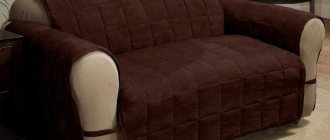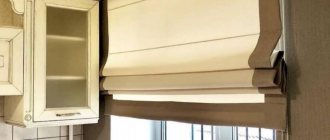What fabric are oil canvases made from?
All canvases for drawing can be classified according to several criteria: by type of base, by the material from which they are made, by texture and size.
First of all, let's figure out what types of canvases there are by type of fabric.
Cotton canvases
Smooth, smooth and silky, cotton canvases are perfect for beginning artists. You can practice on them and try your hand at painting without fear of ruining an expensive canvas. After all, the price of cotton canvases for painting is much lower than linen ones, for example
Another undoubted advantage is that cotton is very affordable; you can buy such canvases in any store.
The disadvantages include the fact that, unlike linen canvas, cotton canvas can sag over time. Again, it all depends on the tension, but compared to linen, cotton is certainly inferior.
Cotton canvases also have one peculiarity: they began to write on them not so long ago. And if artists have been using linen canvases for more than one century, then cotton canvases have been used for only half a century. Therefore, we do not know how such a canvas will behave in the future, whether it will retain all its properties - whether it will sag, crack, and so on.
Linen canvases
Linen canvas is a fairly durable and resistant material to many external irritants, for example, temperature changes, humidity, dryness and others.
The peculiarity of linen canvas for oil is that the linen fabric itself is quite grainy. And this gives the entire canvas an unusual appearance and texture.
The most obvious advantage of linen canvas for painting is its durability. Remember, cotton canvases began to be used quite recently, but linen canvases have been used for centuries! And, as we can see for ourselves, such a canvas perfectly retains all its properties without losing quality, even after centuries.
Another unobvious advantage of linen canvas is that it does not absorb moisture, for example, like cotton canvas. Therefore, it will not swell or sag under the weight of paint or water if, for example, you paint with acrylic paints.
It is also worth noting that linen canvas for oil comes in different grain sizes, therefore, you can choose a canvas for different types of painting, so that it is on this canvas that your painting looks most advantageous.
Synthetic canvases
Such canvases are usually made from polyester. They themselves are very durable and are also not susceptible to moisture and external irritants. It is also worth considering that synthetic fiber will absorb paint differently, which may cause it to spread.
In general, such a canvas is also suitable for oil, and you can safely learn to paint on it, trying different techniques and paint.
Painting canvas: important things in simple words
Dear friends, subscribers and blog visitors!
If you have looked at this page, it means that you are interested in which canvas for painting is best to choose for your work. Whatever technique you use, oil or acrylic , the principle of choosing a canvas is the same! In this article I will tell you in simple words about the types and diversity, the advantages and disadvantages, in short everything about canvases for drawing .
History of canvases
You probably know that artists haven't always used canvas for painting. There were times when paintings were painted on a wooden surface, in other words, on a board. Imagine, even the famous “Mona Lisa” by Leonardo da Vinci was painted on a wooden board made of poplar!
Image of Mona Lisa on a poplar board
Of course, everything has changed since then! Most of the paintings of considerable age were transferred to canvas long ago by restorers of that time. Yes, there is such a technology in painting restoration! I will definitely write about this method of preserving world masterpieces in a separate article! Did you know that the old masters used special optics for drawing? What kind of miracle device this is, read in a separate article.
And when the canvas appeared, art lovers immediately appreciated its merits. After all, no matter how well the wood was dried and prepared, with high humidity it inevitably became deformed, and the picture, alas, lost its appearance! In order not to upset you with this fact, I will say that not all the paintings were deformed! Proper storage and moderate humidity significantly reduced the risk of board deformation.
And another advantage is that the cost of canvas is much lower than a wooden board. A painting on canvas is more convenient and easier to transport; you can even roll it up if necessary. And of course, the most important advantage of canvas is its wonderful surface on which painting looks more expressive and rich.
The photo shows me in the Old Masters Exhibition Hall in Tokyo, Japan. There you can see both masterpieces on canvas and on board, just like in any fine arts museum. If you are interested in the land of the rising sun, then I invite you to a video tour of the museums of Tokyo and Kyoto. Other pleasant surprises await you there!
In Western Europe, painters began painting on canvas from the beginning of the 16th century. Moreover, canvas initially appeared in Italy, and then Flemish and Dutch artists were also able to appreciate the benefits of canvas for painting. In Russia, canvas began to be used for painting a little later. Our painters really didn’t want to switch to a new, soft and not durable-looking surface :)
Types of canvases for painting
It’s even easier for modern artists! In the art supply store there are canvases already ready for painting, on stretchers: buy, bring home and paint.
They also sell canvases in rolls that need to be attached to a stretcher. As a rule, all canvases, including those in rolls, are sold already primed. Before work, the canvas is stretched on a stretcher or fixed on cardboard. For those who do not have the opportunity to buy a ready-made canvas or prefer to make it with their own hands, I will write in the next article.
Depending on the type of material, canvases can be: - linen - cotton - synthetic - combined - jute, cattail...
Which canvas is better?
Now let's figure out which canvas is better for certain techniques, so to speak, all the pros and cons.
Linen canvases
Linen fiber canvas is the most popular and in demand material. It is very durable, resistant to stretching and sagging, which is important. It can have a different surface: from a rough textured texture to a smooth and even one. Millions of masterpieces of world painting are painted on linen canvas!
Canvas from French manufacturer Len/Lin
There are practically no disadvantages to this type of canvas. Moreover, they are produced for various painting “tasks”. For example, for small paintings with detailed drawings and miniatures, it is better to choose a fine-grained canvas made of linen threads. It is ideal for multi-layer painting
Medium grain canvases are sometimes called universal canvases because they are suitable for most painting projects. The format of the picture can be medium or large. By the way, for beginning artists, medium-grain canvas is also recommended as the best option.
Medium grain linen canvas
The canvas of an artist who paints using the impasto painting technique, with large strokes, most often coarse-grained. Canvas with a coarse-grain structure retains the texture of the weaves on the finished product. I think you have paid attention to such pictures.
There are canvases with even more pronounced weaves of threads, the so-called matting or Repin.
Canvas made of matting fabric
If you carefully examine this canvas, you can see that its “pattern” consists of 4 vertical and 4 horizontal threads. As a rule, this is a canvas for very large paintings, it is very durable and textured. Basically, it is a coarse fabric made from natural fibers of the cattail plant.
Note: for a large-format painting, you need to choose a coarse-grained or medium-grained canvas to avoid deformation of the canvas under the weight of the paints.
Cotton canvases
Cotton canvas is no less popular than linen. Like its companion above, it comes in fine-grain, medium-grain and coarse-grain. I also note that any fabric for artistic canvas, in addition to the grain of the fabric, also has density. You need to pay attention to this when purchasing canvas. Thread thickness, weaving features and fabric density are important characteristics of canvas quality!
Cotton fabric has several significant advantages. Firstly, cotton gives a very smooth surface, because sometimes this is exactly what is needed for work! I will also tell you that it is pleasant to work on such a canvas, so it can be recommended for beginning artists and educational work. A great alternative to linen!
Canvas from French manufacturer Cotton/Coton
Secondly, cotton canvas material is much cheaper than linen. This advantage is not very significant for everyone. Most artists strive to choose expensive source materials without skimping on funds. The main thing is the quality of the material for the canvas , without rotten threads and poor primer... it’s more pleasant to work with high-quality canvases and paints, and the result of the work will be excellent for many years!
Some artists claim that the disadvantage of cotton canvas is sagging due to high humidity or under the weight of paints. I beg to differ, since for most of my paintings I use coton, that is, cotton. If you choose the right canvas and pay attention to the quality of the stretcher and the tension of the fabric, then, in principle, nothing will sag.
Most likely, such a minor drawback will appear among those who work in the impasto technique. There the paints are applied generously, in an appliqué manner... the same goes for painting with a palette knife.
Note 1: if you have chosen cotton canvas for painting, buy it in art stores. A denser material, untreated with reagents, is made especially for drawing.
Note 2: if the fabric sags, which, in principle, can happen with any material, then you can stretch it again. Just place the picture on the table and wet the cloth well on the back side. After drying, the fabric will tighten again like a string.
Synthetic canvases.
Canvases made from chemical fibers also have their advantages and disadvantages. The biggest advantage is that synthetics are not afraid of moisture. In addition, canvases made from synthetic threads hold their shape perfectly, have an absolutely smooth surface and do not sag under the weight of paints. I don’t use synthetic canvases only because we don’t have them for sale. Although for the sake of comparison with other materials it’s worth a try...
Combined canvases
Currently, artist stores sell canvases made from mixed threads, such as semi-linen (linen+polyester, linen+polyester, or linen+cotton+synthetics). These canvases are lighter in color than linen and are quite durable.
Examples of combined canvases
Combined fabric has proven itself well, but sometimes there are opinions that different types of threads absorb paint and atmospheric moisture differently. This leads to deformation and rapid destruction of the painting layer. I will neither assert nor dispute, but I know that many foreign manufacturers sell such canvases and there is a demand for them.
Jute
Recently, in artists' stores you can see canvases made from the fibers of the natural plant Jute. In terms of density and roughness, it resembles matting... You have seen it before in the form of ropes or bags. As you may have guessed, the grain of the canvas is very coarse and rough. Many artists like such relief surfaces and the brushwork here turns out to be interesting.
Jute fiber canvas
In addition to canvases on a stretcher, there are other options. For example, my subscribers ask: can I use canvas on cardboard for work? and why is it better than canvas on a stretcher?
Of course you can! Some may find this more convenient than a standard canvas. Canvases on cardboard can also be made from different types of threads; they are designed for any type of paint. Their advantage is that they are stronger, that is, they are rigidly attached to the cardboard base. This is convenient for beginning artists, as well as for those who want to paint en plein air. Canvas on cardboard is much cheaper than on a stretcher, but the quality of the painting does not suffer from this.
Example of canvas on cardboard
In the photo above is one of my mini-works, made on canvas, which is glued to cardboard. Other examples of paintings, as well as wall and furniture paintings can be viewed in my Virtual Gallery.
Another economical option is canvas on hardboard. Fiberboard or hardboard is a sheet material similar to very thick cardboard. It is very strong and durable, so canvas on hardboard is the best option for painting exhibition paintings that often “travel.”
Example of a painting on hardboard
You can also write directly on the hardboard, as in the photo above. Here I painted in oil on a primed fiberboard sheet using the Vanitas technique, a still life with a skull, which did not exist in painting for so long. There are many artists who work exclusively with a palette knife and love hardboard because it is dense, stable and does not bend under the palette knife.
Conclusion: the material for canvas can be natural, synthetic or a combination. The density of the material and the grain size are also taken into account when purchasing. If possible, buy canvas from foreign manufacturers; they are made of better quality: the fabric does not fall apart due to the onset of rotting and the stretchers are not distorted. Choose a canvas based on your preference in technique. Read about the most popular techniques in oil painting
Whatever canvas you choose, the main thing is that the paint layer adheres tightly and reliably to the properly primed and glued canvas. So that you don’t have to restore your painting years later! Small restoration work can be done with your own hands, if there is no major damage to the paint layer.
I hope these tips on choosing canvases will be useful to you. After all, you will agree that the quality of the painting, its picturesqueness and a pleasant, creative course of work depend on the correctly selected canvas.
If you are interested in everything Art-new and modern, I recommend that you read a philosophical article about the Development of modern painting with examples of works
Friends, so that the article does not get lost among many other articles on the Internet, save it in your bookmarks. This way you can return to reading at any time.
Ask your questions below in the comments, I usually answer all questions quickly
I recommend reading similar articles:
Canvas sizing
Another very important and mandatory stage of working with canvas before priming is sizing the canvas.
This can be done with edible gelatin dissolved in water. The consistency of this mixture should be similar to liquid jelly.
Basic properties of sizing
The first reason sizing is necessary is to isolate the canvas (cardboard, paper, board) from the oil paint. On an unglued base, the oil from the paint penetrates into the cellulose, and the free fatty acids contained in the oil partially destroy it. As a result, cellulose becomes brittle and easily breaks under mechanical stress.
Sizing is also necessary if the fabric has a rare weave. The adhesive film additionally covers the holes between the threads. This is achieved by applying several sizing in 2-4 layers.
The main task for an artist when gluing canvas is not to wet it through, but to apply a protective film to the front side of the canvas. Therefore, it is necessary to use a sizing solution that resembles the consistency of jellied meat. With such a viscosity, it will be slightly absorbed into the threads, but this will be enough for strong adhesion to them.
And the primer fits better on the glued canvas, thanks to which the consumption of primer is reduced to the optimal amount.
Subframe and types of canvas base
The base is one of the most important characteristics of the canvas. It is either stretched onto a stretcher or glued onto hardboard (fiberboard, fiberboard, MDF) or thick cardboard.
Example of canvas on a stretcher
A subframe is a structure made of wooden, aluminum or plastic slats onto which the canvas is stretched. The canvas on the stretcher “breathes”, and the paint layer dries faster and more evenly. The slats must have sides that prevent it from coming into contact with the base. If this happens, it may stick to the slats and then the tension will change.
- Wooden slats are made from hard wood - pine, birch, oak, beech, which can withstand changes in humidity and temperature well.
- Aluminum ones are lightweight and durable, but their sharp corners and edges can cut through the canvas.
- For final fixation, you can fire it in a conventional oven. This is absolutely safe, since only water evaporates.
- Plastic stretchers, although cheap, are unreliable and inconvenient to use; they cannot be used to properly tension the canvas.
They also differ in design.
Blind subframe
Modular subframe
In a blind subframe, the slats are connected to each other with glue or iron staples. It is impossible to adjust the tension of the canvas if it sag.
In a modular subframe, the slats are connected according to the tongue-and-groove principle; small wedges are included (that’s why they are also called wedges). If the canvas sags, you can tighten it by driving wedges into special grooves.
A dense base makes working with canvas more convenient in the open air, as it allows you to do without an easel. In addition, the pasted canvas is less susceptible to deformation and damage; there is no danger that it will sag and thus deteriorate the quality of the paint layer.
- Canvas on a thick cardboard base is an excellent option for beginning painters and students. It is suitable for sketches and studies of small format, made in acrylic or oil. Allows you to frame your work in standard frames.
- A base made of hardboard or fibreboard copes well with multi-layer paint coating and an abundance of decorative elements. Cons: it is much heavier than cardboard or even canvas on a stretcher, in addition, it can sag towards the center of gravity.
- Rolled canvas is the best option for fans of large-scale works. A piece of canvas of the required size is cut from the roll, and the artist fixes it onto a stretcher or thick base himself. On the one hand, this is a very economical solution, on the other hand, stretching the fabric on any base requires certain skills.
Why prime a painting?
First of all, you must understand that primer is not the paint with which we paint a picture, but the base that we put on the canvas before we start painting.
So, why prime your canvas? Surely you have painted walls or hung wallpaper at least once. So, before doing this, you most likely leveled the walls, cleaned them with sandpaper, and covered them with putty. You did all this in order to level the surface of the wall and apply an even layer of paint, or paste wallpaper without roughness or bubbles.
So, with canvas primer it’s about the same. Primer is our putty, which should be applied to make the surface of the canvas smoother and more textured. The primer will also serve as a good binder for the paint and the canvas itself.
Another important point why you should cover the painting with primer is so that the canvas fabric does not absorb a lot of paint. This will save on its consumption, and, accordingly, your money on materials.
There are now both regular and primed canvases on sale. I always advise beginning artists to buy an already primed canvas to save themselves from unnecessary costs. But, if you have been painting for a long time, you can try to prime the host yourself, of course, following all the instructions on the can of primer.
Oil canvas can be coated with a special oil primer consisting of white and an oil thickener. But such a primer will take a very long time to dry, so I would recommend using acrylic primer.
It dries much faster, is more available in stores and is suitable not only for painting with acrylics, but also with oil paints. With such a primer, the surface of your canvas will be smooth, matte and elastic, which will help you in further work when painting.
What fabric to choose for canvas?
Canvas is usually made from various woven materials such as linen, cotton, jute, polyester (synthetic fiber), as well as mixtures of the above materials. Each of them has its own advantages: - linen canvas
is durable, resistant to stretching and sagging, and retains its original grain well.
- cotton canvas
- a smoother and more even surface, with good stretch it is easy to work with, much cheaper than flax -
synthetic canvas
- not afraid of moisture, stable, durable and not sensitive to irritation from oil paints.
The complete absence of texture makes the material completely smooth. -combined material:
cotton-linen, cotton-synthetic - such mixtures help cotton fabric make the fabric more durable and less susceptible to stretching.
Canvases by type of base
Just like their structure, canvases are also divided according to the type of base. Oil canvases come on cardboard, a stretcher, or simply in a roll; there is also special paper for oil paints.
Let's look at each of these types in more detail.
Canvas on cardboard
This is a canvas that is glued to cardboard. It is often used for sketching by those who are just learning to paint and want to hone their drawing skills. This kind of canvas is lighter and cheaper, it’s easier to choose a frame for it, and it’s also convenient to take with you to the plein air. Just don't confuse it with primed cardboard. After all, unlike the first one, there is already a canvas here.
Canvas on stretcher
Timeless classic. The canvas is stretched on a wooden frame, and if desired, it can be removed, re-stretched or the stretcher changed. But you will have to order a frame for such a canvas at a framing workshop.
Canvas in roll
This is primed and glued fabric, rolled into a roll. Before starting work, such a canvas must either be glued to cardboard or stretched onto a stretcher. If you want to try to create the basis for the picture yourself, you can take it.
Butter paper
I advise you to buy a couple of sheets from Russian manufacturers - the paper is cheap and suitable for sketches. It is primed, just like canvas.
Primed or unprimed, on a stretcher or on a cardboard base
If you work with oil paints, the choice is obvious - buy primed canvas. Of course, you can choose an unprimed base, purchase a primer mixture separately and process the canvas yourself. Specialized stores offer a large selection of artistic primers, with which you can give the base the necessary texture and shade.
As for canvas on a stretcher or on cardboard, the choice always remains with the master.
- The canvas on the stretcher can be adjusted at any time; for transportation, you can remove the canvas, then put it back on the stretcher. Many artists like to paint when the canvas springs a little as a result of stretching.
- The cardboard base is canvas glued onto cardboard. Since there is no subframe in the design, the working base is thinner. The cost of cardboard structures is less; it is impossible to adjust the degree of tension of the canvas.
The durability of a painting is determined by a complex of factors - the quality of the canvas and paints, operating conditions (temperature and moisture level).
A modular stretcher is used as a base for a large canvas . A prefabricated structure is the most successful option for drawing and storing large-scale works. During the process of creating a masterpiece and its use, a large primed canvas can become deformed under the influence of temperature and other external factors. If the canvas is bent, it is easy to correct the deformation using canvas slats . In addition to modular structures, blind subframes are also presented.
Canvas grain
You need to choose a canvas based on its grain size based on what will be written on the painting. What technique will be used, how much or how little paint you will apply, what your strokes will be like.
Considering all the features when choosing a canvas, especially if you know that your creative vision may change, is quite difficult. But there are several main types of grain that you should consider when choosing a canvas for your future painting.
Fine grain canvas
If you paint in a smooth technique and apply paint in thin layers, a fine-grain canvas will work well for you. Also, on such a canvas it is very convenient to paint miniature paintings, recording the smallest details.
Coarse canvas
As you might have guessed, this type of canvas is the opposite of a fine grain canvas. If you are painting a voluminous work, apply a lot of paint with broad strokes - large grain on the canvas is what you need.
Such a canvas will not sag under the weight of all the paints that you will use, but will only emphasize all the charm and peculiarity of the technique in which you paint the picture, for example, impasto.
Scenic canvas
Special canvas for oil paints, made from 100% linen. Like coarse-grained canvas, such a canvas does not stretch or sag even under several layers of paint.
Should I choose linen canvas?
By choosing a linen canvas, you will repeat the old masters who painted their masterpieces only on linen canvases. Linen has proven itself to be the best material for canvas. Paintings on linen canvases have been painted for centuries, unlike cotton, which appeared as a material for canvas not so long ago. The choice of linen canvas for painting is “noble” and the best among artists.
If we talk about the advantages of linen canvas, it is worth noting:
- linen does not absorb moisture like cotton;
- less susceptible to sagging over time;
- not so susceptible to mechanical damage;
But what about the cons? Are they available when choosing linen canvas? Eat:
- linen canvas is much more expensive than cotton;
- its weight is a little more than cotton (if we talk about exhibitions and sending paintings by mail);
Canvas size
It all depends on your imagination and what you will draw.
I advise beginning artists to choose a medium-sized canvas (30x40 or 40x50) for the first time. A painting of this size will fit into almost any interior; you will feel the scale of the work, but will not get tired of drawing details on a large canvas.
Over time, when you get better at it and master some oil painting techniques, it will be easier and simpler for you to take on something large-scale, paint a picture on a large canvas. After all, such work requires not only a lot of expenses in materials, but also a lot of time and patience, so it’s still better for a beginner to take a smaller canvas.
Small size canvases start from 10x10 cm, medium size from 30x40 cm and 50x70 cm, and large size canvases from 60x90 cm.
Of course, if you wish, you can find canvases in both larger and smaller formats. And, if you are painting a picture for yourself, then you should think in advance where you will put it later and whether it will stand out from the interior.
Synthetic canvas, choose or not.
I admit honestly, at the time of writing this article, I have never used synthetic fiber canvas. Moreover, in the store where I buy my art materials, I have never seen synthetic canvas . This is, of course, a trend of new times in painting and most art salons do not yet risk bringing them. Artificial canvas - how can you choose this, most who read this will think. But time moves forward, and just as before no one could even think about good synthetic brushes, the same thing is now with canvases. Advantages of synthetic canvases:
- I think no one will argue with the fact that synthetics do not rot and do not absorb moisture;
- synthetic canvas will be lighter than canvas made from natural materials;
Disadvantages of synthetic canvases:
- as the artists say, they have not stood the test of time;
- Few people have practiced on them (I myself have never written on them), which makes it difficult to say how he behaves while writing.
- There are also combined canvases: cotton-linen, cotton-synthetic, but I personally am skeptical about them. Different materials behave differently, and when combined they can behave in unpredictable ways.
What grain size of canvas is needed for high-quality painting?
On each canvas it is written what its grain size is. How to understand them and which one is better?
There are three types of canvas grain:
- fine grain canvas . Such canvases are distinguished by their almost smoothness, the grain of the canvas is very fine and that is why not many people choose it now. It is good to paint on such canvases with glazes, applying one layer of paint after another. A good choice if you want to paint a portrait.
- medium grain of canvas . But canvas with a medium grain size is often one of the most in demand. On such canvases it is convenient to paint impasto, and you can also paint with glazes.
- Coarse-grained canvas is perfect for using a palette knife. This canvas holds textured painting well without visible deformation.
Which canvas to choose, primed or not?
The choice is obvious; your canvas must be primed in order to paint on it with oil paints. An unprimed canvas is not suitable for writing, that's 100%. But as always, you have a choice: buy a primed canvas, or an unprimed one and naturally prime it yourself. How? Stores sell artistic primers that need to be used to “finish” the canvas.
Canvas on a stretcher or on cardboard, which one to choose?
Here the choice, as always, is yours:
- x canvas on a stretcher , you can adjust its tension; during transportation, you can remove the canvas and then stretch it again. Canvas on a stretcher gives “springiness” due to stretching during writing. Personally, I really like it.
- canvas on cardboard , this is the same canvas only glued to cardboard, it is thinner (due to the lack of a stretcher) and costs less than canvas on a stretcher. With this, you will not be able to adjust the tension of the canvas, but it will not sag over time.
It is also worth mentioning plywood, fiberboard and wood on which artists paint sketches in the studio or en plein air. Excellent material, but as you understand, it is not durable, you can write on it, but pay attention to the soil of this material. Plywood can delaminate over time, and fiberboard can give waves from moisture. Wood in this case will be more practical if it is well primed and protected, you’ve seen wooden icons that believers have been coming to for centuries. Of course, first of all, the durability of a painting depends on the conditions in which it is located, how changeable the climate is and the level of moisture in the room where it hangs. The material from which the canvas is made can significantly extend or shorten the “life” of your masterpiece.
Paint color mixing chart Thinner for oil paint. Which to choose? Which palette to choose for oil painting? How to choose a frame for a picture, short and clear. Watercolor, what kind of paint?











